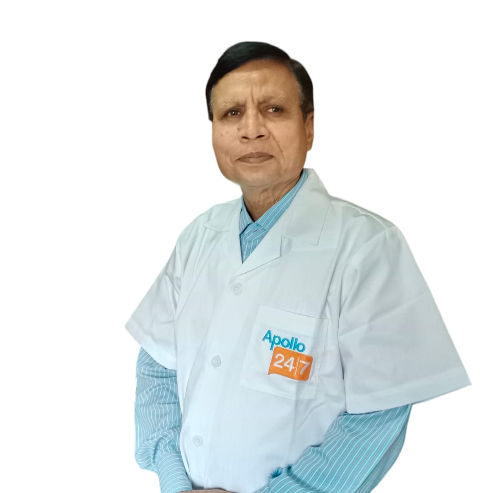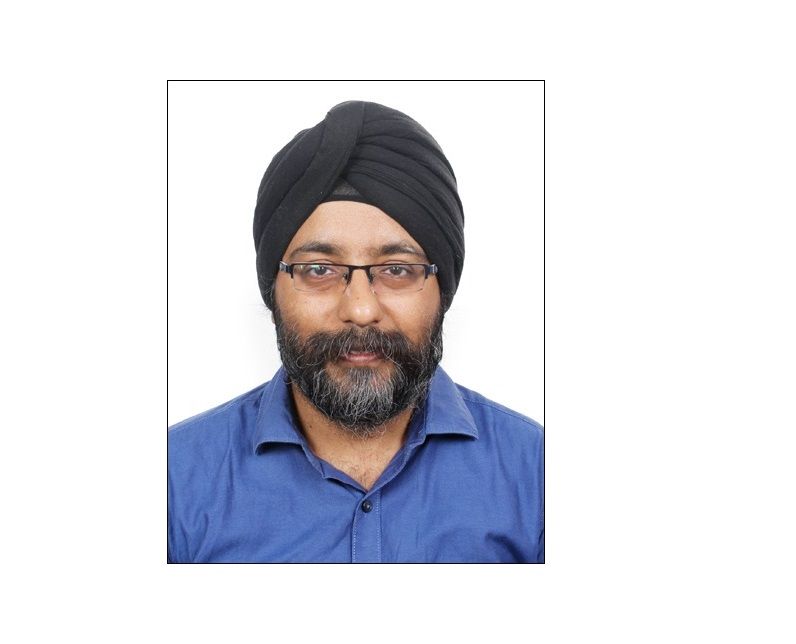Understanding Clubfoot: Signs, Exercises, Treatment
Learn about clubfoot, its signs, treatment options like the Ponseti method, and essential exercises for recovery. Get expert insights on managing clubfoot effectively.

Written by
Last updated on 3rd Jul, 2025
Introduction
Clubfoot, also known as congenital talipes equinovarus (CTEV), is a common congenital deformity that affects the foot and ankle. It is characterised by the foot being twisted inward and downward, making it difficult for the affected individual to walk normally. This condition can be diagnosed at birth or even before birth through prenatal ultrasound. While the sight of a clubfoot can be alarming to parents, the good news is that with the right treatment, children with this condition can go on to lead healthy, active lives. This article aims to help parents and caregivers understand the signs, exercises, and treatment options available for clubfoot and provide a comprehensive approach to managing the condition to ensure the best possible outcomes.
What is Clubfoot?
Clubfoot is a deformity in which the foot is twisted into an abnormal position. Typically, the foot points downward (equinus) and turns inward (varus). In severe cases, the foot may be smaller, with a higher arch, and the tendons may be tight. Clubfoot can affect one foot (unilateral) or both feet (bilateral), but the majority of cases involve both feet.
There are two main types of clubfoot:
Idiopathic Clubfoot: The most common form, where no specific cause is identified. This type often appears in otherwise healthy infants, and there may be no family history of the condition.
Secondary Clubfoot: This form is less common and occurs due to other underlying conditions, such as spina bifida or arthrogryposis.
While the exact cause of idiopathic clubfoot is unknown, it may involve genetic factors or environmental influences during pregnancy. Secondary clubfoot may occur as a result of abnormal muscle or nerve development.
Signs and Symptoms of Clubfoot
The most apparent sign of clubfoot is the abnormal positioning of the foot or feet at birth. Some common features include:
Inward turning of the foot.
Downward pointing of the foot (equinus), making it look as if the foot is pointed toward the ground.
A smaller-than-normal foot with a higher arch.
Tightness in the Achilles tendon or the tendons on the back of the foot, making it difficult to move the foot upward.
The deformity can sometimes be diagnosed through prenatal ultrasound, but it is usually confirmed after birth by a paediatrician or pediatric orthopaedic specialist.
Treatment Options for Clubfoot
The good news is that most children with clubfoot can achieve full mobility and functional feet with proper treatment. Early diagnosis and intervention are essential to achieving the best outcomes, as untreated clubfoot can lead to difficulties with walking, long-term pain, and joint issues as the child grows.
1. Non-Surgical Treatment: The Ponseti Method
The most widely recognised and effective method for treating clubfoot is the Ponseti method. Developed by Dr Ignacio Ponseti in the 1950s, this non-surgical approach has become the gold standard for clubfoot correction.
Key components of the Ponseti method include:
Casting: The treatment begins with a series of casts applied to the foot, one each week. Each week, a new cast is applied to gently adjust the foot’s position. The doctor will carefully stretch and move the foot to help it turn into a more natural position. This process usually takes about 5 to 8 weeks, depending on how serious the clubfoot is.
Achilles Tendon Release: After the foot is correctly positioned through casting, a small surgical procedure may be performed to release the tight Achilles tendon. This step allows further correction and is typically done under local anaesthesia. The tendon is lengthened to ensure the foot can point upward.
Bracing: Once the foot has been corrected, your child will need to wear a specialised foot abduction brace (often called a Dennis-Brown splint). This brace holds the feet in the corrected position and prevents them from returning to their original position. Initially, the brace is worn full-time (except for bathing) for 3-4 months and then worn only at night for up to 4 years.
2. Surgical Treatment
While the Ponseti method works for most children, some may require surgery to correct the foot if non-surgical methods are insufficient. Surgery is typically considered in more severe cases of clubfoot or if the condition does not respond well to casting.
Common surgeries include:
Posterior release: A procedure in which tendons and ligaments that are too tight are released or lengthened.
Osteotomy: A procedure to cut and reposition bones in the foot if there is significant deformity.
Surgical intervention is typically reserved for children who do not achieve full correction with casting and bracing.
3. Physical Therapy and Exercises
Physical therapy plays a critical role in the recovery and maintenance of the foot’s function after treatment. After casting and surgery (if needed), regular exercises can help improve muscle strength, flexibility, and joint mobility. These exercises also prevent stiffness and ensure that the foot continues to move normally as the child grows.
Some exercises that are commonly recommended by pediatric orthopaedic specialists include:
Stretching exercises: These help improve the flexibility of the foot and ankle and prevent the recurrence of deformities.
Towel stretches: With the child seated, a towel is gently used to stretch the bottom of the foot and the Achilles tendon.
Heel cord stretches: These stretches help lengthen the tight Achilles tendon, improving the foot’s ability to point upward.
Strengthening exercises: As the child gets older, exercises to strengthen the foot and ankle muscles are recommended to ensure proper function.
4. Regular Follow-Up Appointments
After the initial treatment, it's important to keep up with regular follow-up appointments with your child’s orthopaedic specialist. These check-ups help the doctor check how the feet are aligning and decide if any adjustments or extra treatment is needed.
If any recurrence of the deformity occurs, the doctor may adjust the treatment plan or recommend additional corrective steps, such as bracing or further casting.
Long-Term Outlook for Children with Clubfoot
The long-term prognosis for children with clubfoot is generally very positive, especially when treatment begins early and is followed consistently. Most children who undergo the Ponseti method or corrective surgery will experience:
Normal walking without pain or limitations.
No long-term joint problems or significant muscle weakness.
The ability to engage in physical activities, including running and playing sports, as they grow.
Caring for a Child with Clubfoot: Tips for Parents
Navigating your child’s clubfoot treatment can feel daunting at times, but your ongoing support is crucial to their progress. Here are some tips to help you stay on track and make the journey a little easier:
Consistency: Consistent practice of these exercises is crucial for achieving the best outcomes. Make sure to incorporate these exercises into your child’s daily routine.
Supervision: Always supervise your child while performing these exercises to ensure they are done correctly and safely.
Comfort: Ensure that the exercises are performed in a comfortable and pain-free manner. If your child experiences pain, stop the exercise and consult a healthcare professional.
Encouragement: Encourage your child to participate in these exercises by making them fun and engaging. Use positive reinforcement to motivate your child.
Conclusion
Clubfoot is a condition that can be successfully treated, and with the right care, most children grow up to lead healthy, active lives. The key is early diagnosis and intervention. By addressing the condition early, doctors can use a variety of methods—from gentle manipulation to, in some cases, surgery—to help realign the foot and set the foundation for normal development. If your child has been diagnosed with clubfoot, rest assured that with the proper care, they will have every opportunity to thrive.
If you have any concerns or need more personalised guidance, don’t hesitate to reach out to a pediatric orthopaedic specialist who can walk you through the next steps and support you throughout the treatment process.
Consult Top Orthopaedicians
Consult Top Orthopaedicians

Dr. Aniruddha Deshmukh
Orthopaedician
10 Years • MBBS, Dip (Orthopaedics), DNB (Orthopaedics)
Pune
Dr. Aniruddha's advance ortho and polyclinic, Pune

Dr. Manoj Dinkar
Orthopaedician
15 Years • MBBS, Dip (Orthopaedics)
New Delhi
THE DOCTORS NESST, New Delhi

Dr. Keshav Digga
Orthopaedician
14 Years • MBBS, MS Orthopaedics, FIASM, FIMISS
Kolkata
DIGGA HEALTHCARE, Kolkata

Dr. Padam Singh Gautam
General Physician/ Internal Medicine Specialist
43 Years • M.B.B.S (WARDHA M. S.), F.A.G.E. (MANIPAL), F.A.I.M.S. (Pb.), M.A.I.M.S. (Pb.), M.R.S.H. (LONDON)
Noida
Dr Padam Singh Gautam Fracture Clinic, Noida
(50+ Patients)

Dr. Amandeep Singh Narang
Orthopaedician
11 Years • MBBS, DNB
Delhi
APOLLO FAMILY CLINIC, Delhi

